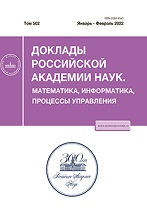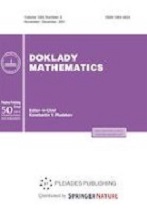|
This article is cited in 1 scientific paper (total in 1 paper)
ADVANCED STUDIES IN ARTIFICIAL INTELLIGENCE AND MACHINE LEARNING
Geometric deep learning for design of catalysts and molecules
R. Yu. Lukin, R. A. Grigoriev
Research Center of Artificial Intelligence, Innopolis University, Innopolis, Russia
Abstract:
Application of deep learning to search for catalysts is an important challenge for solving problems caused by global warming, such as energy storage and conversion of greenhouse gases into more valuable products. In this work, several graph neural networks (GNNs) are presented, including convolutional and message passing architectures with physically informed node and edge attributes for atomistic systems. It is shown that the proposed architectures lead to an improvement in adsorption energy prediction on the OC20 dataset in terms of the mean absolute error of predicted energy and energy within threshold metrics. The proposed architectures are robust to overfitting and can be used to predict experimental and quantum chemical properties of a wide range of materials and molecules. Two GNN architectures (EdgeUpdateNet and OFMNet) with advanced featurization of nodes and edges are proposed. Edge fingerprints are represented as elements of interatomic interaction matrices (Coulomb matrix, Ewald sum matrix, sine matrix). For node fingerprints, we use elements of the orbital field matrix, which is a one-hot representation of the electronic state of atoms with surrounding atomic orbitals. Additionally, a representation of catalytically active atoms in the form of a subgraph is proposed and implemented. The proposed methods and architectures demonstrate an improvement in the accuracy of adsorption energy prediction. Especially significant improvements are observed in out-of-domain examples for both adsorbates and catalysts. The generalization and extrapolation capabilities of the proposed GNN architectures make them feasible for catalyst screening in a vast chemical space.
Keywords:
graph neural networks, deep learning, quantum chemistry, catalysis, cheminformatics.
Citation:
R. Yu. Lukin, R. A. Grigoriev, “Geometric deep learning for design of catalysts and molecules”, Dokl. RAN. Math. Inf. Proc. Upr., 508 (2022), 70–72; Dokl. Math., 106:suppl. 1 (2022), S63–S64
Linking options:
https://www.mathnet.ru/eng/danma338 https://www.mathnet.ru/eng/danma/v508/p70
|


| Statistics & downloads: |
| Abstract page: | 80 |
|





 Contact us:
Contact us: Terms of Use
Terms of Use
 Registration to the website
Registration to the website Logotypes
Logotypes








 Citation in format
Citation in format 
